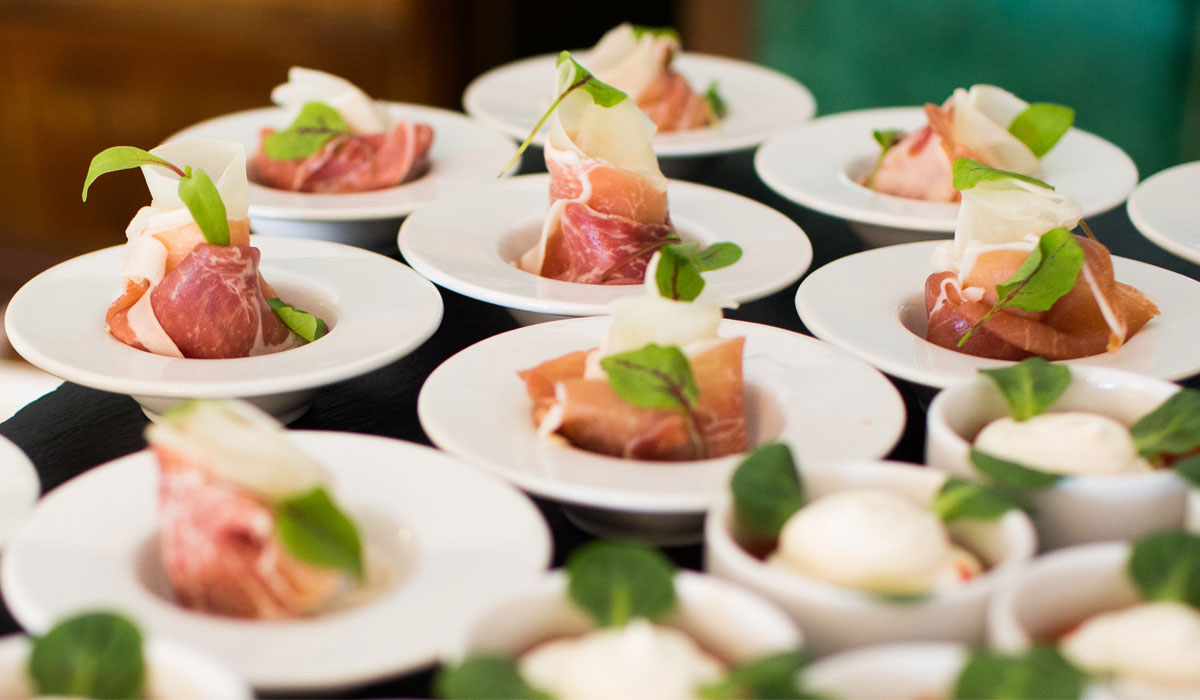In terms of the strategy and business of foodservice delivery, there have been a lot of changes in the past decade. What started out as a retail-driven, value-add for busy consumers has turned into a booming business for both restaurant operators and third-party delivery providers. The change was so pivotal that our company shifted focus to catering delivery fulfillment in 2016, and today we have drivers across 42 major metros throughout the U.S. and Canada.
The changes to delivery have given way to more on-demand services and have also altered how restaurants implement their catering delivery strategies. Most major brands—and even smaller ones—preferred to operate self-managed fleets at one point in time. While this strategy worked for a while, as catering operations grew, so did their delivery challenges while using this model.
In the meantime, third-party delivery providers were growing in size and strength, which led some brands to adopt this approach for catering delivery. This model has its own set of operational nuances (tablets, counterspace, and more), despite there being a driver available for every catering order a restaurant receives.
While there are brands that leverage both approaches extremely well, in our experience, neither model as a standalone yields the same long-term success for growing a solid catering client customer base. So what does?
From our experience, the brands that implement a hybrid approach—using both self-managed fleets and third-party delivery providers—have the highest customer and employee satisfaction rates, and there are several reasons why this is true.
If we look at just the strategy for self-managed fleets, while this is one way restaurants can continue to control their catering experience, issues can arise in terms of labor and cost. Order fluctuations can mean your operation is either over or understaffed, and there is no way to predict the numbers of orders coming in on any given day or during specific dayparts. While having the right software tools can eliminate some of the element of surprise, technology can’t remove it completely. This then puts the operational burden on restaurant staff, who must make sure delivery orders are covered when it’s busy and that drivers are trained in other functions when it’s not.
Overall, the last thing an operator or store manager wants to do is pull a team member off the line to deliver an order. This leaves in-house staff vulnerable to the lunchtime rush and missed opportunities in terms of in-store sales.
Alternatively, if we look at the restaurant operations that strictly rely on third-party delivery providers, while there may always be a driver available, there could be some loss of control in terms of restaurant branding and customer experience. This has the potential to dilute your brand promise as in some cases your catering delivery will be the first point of contact a customer has with your concept. Therefore, if the delivery doesn’t leave a great impression, the customer may get lost.
Just as the launch of hybrid vehicles was done with success in the automotive industry, operators that can utilize both a self-managed fleet of drivers and third-party delivery partnerships, bring in the best of what both have to offer. But the shift to this model isn’t always easy. There are going to be mistakes and there will be hiccups along the way. However, the long-term benefits are worth the transition. This is the way brands have to pivot or else they are going to get buried in terms of lost catering sales and opportunities.
The hybrid strategy works best when restaurant operators have a small fleet of delivery drivers and branded vehicles to cover a few daily runs. This can mean a store manager or other employee who has the ability to make delivery runs when absolutely needed. Meanwhile, third-party partnerships can be used to handle the bulk of a restaurants’ catering deliveries or the overflow on busier days.
The hybrid approach also works well for brands that handle large catering volumes, see seasonal fluctuations, or have VIP clients that prefer one delivery channel over another.
Part of the reason why the delivery for catering model has shifted is due to the variety of order platforms now available to consumers, and this includes marketplaces. If done correctly, marketplaces can serve as a sales and marketing tool designed to drive additional catering orders to your brand.
Brands should use marketplaces to promote their catering offerings and make it easier for customers to place orders. Marketplaces aren’t something to be feared. Instead, they should be viewed as another tool in the box or as another way to drive revenue and reach more consumers.
While marketplaces may ‘own’ the catering customers’ data, there are ways brand operators can still capitalize on their guest information. Operators don’t need to ‘own’ their customer; they just need to figure out how to properly influence their purchase patterns.
Customers are going to order from a marketplace because it’s easy. And regardless of how they order and from which platform, one thing remains true: they’re always going to order the type of food they want to eat. So add an element of theater to your presentation process and create the same level of excitement each and every time they place a catering order for delivery. I would rather have influence over 100 customers than own the data on 1000.
While marketplaces may leave you vulnerable in terms of customer data, operators can control each branding element needed to keep those customers coming back for more. This includes promotional materials, food quality and the overall impression left on the client. All of these elements can work together to influence buying patterns over long periods of time. And if you have good margins on your catering menus and items, your brand should be able to thrive regardless of the fees involved.
We recommend restaurant operators first do a cost analysis when considering whether to use a marketplace or third-party delivery provider. Fees for these services can add up unless it makes financial sense. In some cases, fees can be equivalent to the salary of a catering sales manager, if not more. This works if you do not have a CSM. If you do, make sure you build any potential fees into your off-premises budget as you move into 2020. I would not recommend going full tilt on marketplaces or third-party delivery services if you have low-margin food items because it has to make financial sense for the brand. For example, if you have a 20 percent margin on your menu items and are giving 18 percent to marketplaces or third-party providers, you are likely giving away any potential profit to your off-premises program. This is why a cost analysis is so important.
It’s also important to make sure you choose the right third-party partner. This partner should understand your brand and be able to educate its drivers to deliver on your brand standards. Everything about your concept should be reflected through the catering delivery and setup to ensure a stellar experience for your customer. Overall, brands are still trying to determine the best way forward in terms of catering delivery and marketplaces. By using a hybrid approach and shifting their view of marketplaces, operators can tackle the strategy needed to grow incremental sales through catering.
Aaron Hoffman is the CEO and co-founder of DeliverThat, a third-party delivery service provider that is the industry leader in restaurant catering delivery and setup. As CEO, Hoffman has been responsible for driving DeliverThat’s expansion into 40-plus major metros across the United States and Canada. In addition, he has grown company revenue from $100,000 in 2017 to more than $3 million in 2019













